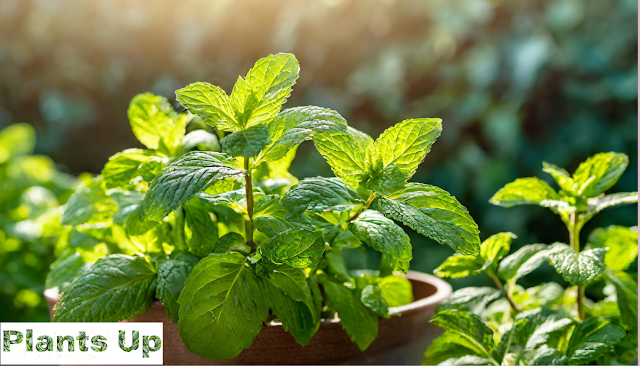.jpeg) |
| Tips for Growing Succulents: Nurturing Resilience and Beauty |
Introduction: The Allure of Succulent Gardening
In this comprehensive guide, we'll explore a myriad of tips and techniques to help you not only grow but thrive alongside your succulent plants.
I. Choosing the Right Succulent
1. Consider your location:
Start by evaluating your living space and its lighting conditions. Different succulent species have different lighting requirements, so choose one that matches your environment.
2. Research Species:
Dive into the captivating world of succulent plants. Explore the diverse species available and choose the ones that suit your aesthetic preferences and care capabilities.
3. Local Climate:
Pay attention to your local climate. Some succulent plants are better suited for outdoor cultivation, while others grow best indoors. Select varieties that can thrive in your area.
II. Art of Potting
1. Choosing the Right Container:
Select pots or containers with drainage holes to prevent waterlogging, a common problem for succulents. Terracotta pots are a classic choice because of their breathability.
2. Well drained soil:
Use a special succulent or cactus potting mix to improve drainage, or make your own by adding perlite or sand. Proper soil is important for succulent health.
3. Planting Depth:
Plant your succulents at the correct depth. Make sure the top of the root ball is level with the soil surface to prevent rot.
III. Lighting Essentials
1. Sunlight Requirements:
Succulent plants generally thrive in bright, indirect light. Place them near a south or west facing window for best results. Rotate the pots from time to time for even growth.
2. Indoor Lighting:
In low-light indoor environments, consider using artificial grow lights to supplement natural sunlight. LED grow lights are energy-efficient and effective for succulent plants.
IV. Watering the Mind
1. Golden Rule:
The main rule of caring for succulent plants is to avoid excessive watering. Allow the soil to dry completely between waterings. Water thoroughly when needed, allowing excess water to drain away.
2. Watering Techniques:
Use a watering can with a narrow spout to deliver water to the base of the plant, avoiding getting the leaves wet. Water early in the day to allow excess moisture to evaporate.
3. Seasonal Adjustment:
Adjust your watering frequency depending on the weather. Succulent plants require less water during the dormant winter months and more water during their active growth periods in the spring and summer.
V. Temperature and Humidity
1. Ideal Temperature Range:
Most succulents thrive in temperatures between 60°F to 80°F (15°C to 26°C). Protect them from frost, as succulents are sensitive to extreme cold.
2. Humidity Considerations:
Succulent plants are adapted to low-humidity environments, but they can benefit from occasional misting in dry indoor settings. Avoid prolonged exposure to high humidity.
VI. Pruning and Maintenance
1. Pruning Dead Growth:
Remove dead or damaged leaves and stems to encourage healthy growth and prevent the spread of diseases or pests.
2. Fertilize sparingly:
Use a balanced, diluted succulent fertilizer during the growing season (spring and summer). Use sparingly to avoid overfeeding.
3. Pest and disease management:
Keep an eye out for common succulent pests like mealybugs and aphids. Treat infestations immediately with natural solutions or insecticidal soap.
VII. Diffusion Techniques
1. Leaf Clippers:
Learn the art of propagating succulent plants through leaf cuttings. Select healthy leaves, leave them to callus, and plant them in well-drained soil.
2. Offset or Puppies:
Many succulents produce offsets or pups that can be gently separated and planted to form new plants.
3. Stem Cuttings:
For succulents with a stem-like structure, such as the jade plant, stem cuttings can be taken, calloused, and planted for propagation.
VIII. Creative Arrangements
1. Terrarium and Dish Garden:
Create adorable succulent terrariums or dish gardens by mixing different species in a glass container with well-drained soil, pebbles and sand.
2. Vertical garden:
Create vertical gardens by planting succulents in wall-mounted containers or frames. This space-saving technology adds a stunning visual element to any space.
3. Succulent Wreaths and Centerpieces:
Design living wreaths or centerpieces using succulent cuttings, moss and wire frames for unique and eye-catching decor.
IX. Common Challenges and Solutions
1. Excessive watering:
Succulents are sensitive to overwatering. Establish a strict watering schedule and avoid keeping them in waterlogged soil.
2. Lack of Light:
Insufficient lighting can cause strain (stretching) of the succulents. Make sure they receive adequate indirect sunlight or artificial grow lights.
3. Pests and Diseases:
Keep an eye out for mealybugs, aphids, and fungal problems. Regular inspection and prompt treatment are the keys to lush health.
Conclusion: Your Juicy Success Story
Growing succulents isn't just a gardening venture; It is a journey of nurturing beauty and resilience. As you tend to these captivating plants, you'll uncover the secrets of balance, patience, and the wonders of nature. Your succulent garden is more than a collection of plants; It is a testimony to your commitment to promote life and beauty in harmony.
So, embark on this green adventure, and let your lush garden be a reflection of your connection with the natural world.
Happy Gardening!
